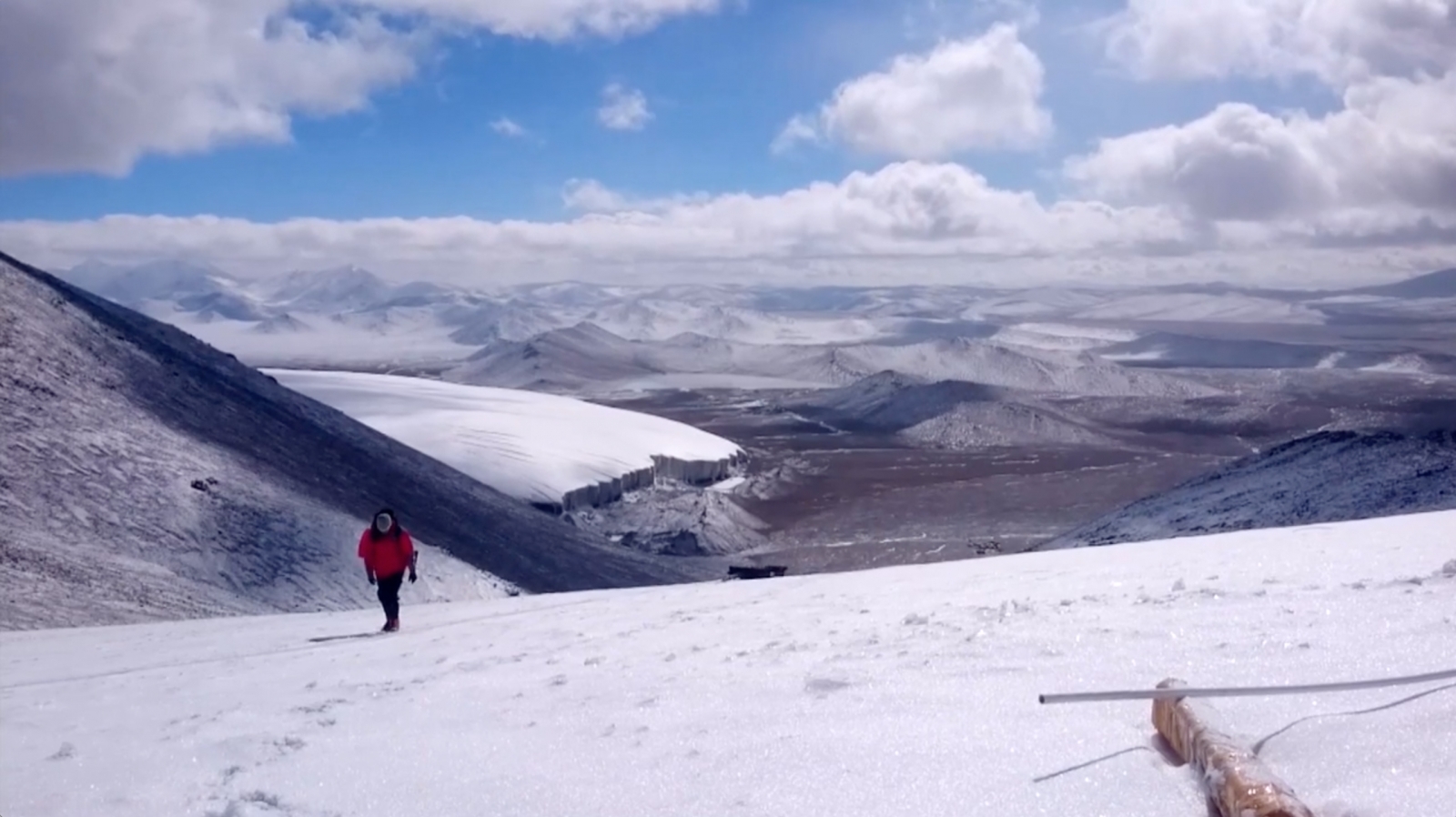Stone Age secrets trapped in oldest ice core ever drilled that is the size of Empire State building
Scientists studying the ice core hope to gather information to assemble one of the longest-ever records of Earth's climate history.




Scientists have uncovered the oldest ice core ever drilled outside the polar region, which they believe could contain ice that was formed over 600,000 years ago – long before the appearance of modern humans. The ice core, which is about the length of the Empire State building, may also contain information from the Stone Age, which researchers believe could help them assemble one of the longest-ever records of Earth's climate history.
Scientists from the US and China, who are currently analysing the ice core have already found dramatic evidence of recent and rapid increase in temperature observed in some of the highest and coldest mountain peaks across the world.
Ice cores are essentially cylinders of ice drilled out of a glacier or an ice sheet and generally come from Antarctica and Greenland. According to the British Antarctic Survey (BAS), the oldest known ice cores were found in Greenland – dated to be 123,000 years old – and Antacrtica, which scientists estimate was formed over 800,000 years ago.
However, in this case, the ice core found was in an area not within the Polar Regions. In 2015, the researchers recovered five ice cores at the Guliya Ice Cap in Tibet, one of which was over 1,000ft long. Researchers at the Swiss research center ETH Zurich dated the ice at the base of the core to be at least 600,000 years old, by measuring radioactive elements within the ice core.
Ice cores provide evidence of temperature rise
Researchers found that there has been a persistent temperature rise and increase in precipitation over the last few centuries in Tibet's Kunlun Mountains. However, it is on the Guliya Ice Cap, where the latest ice core was drilled that scientists found the most dramatic and noticeable changes. In the last 50 years, the average temperature at the Guliya Ice Cap has gone up by 1.5 degrees Celsius and the average precipitation has risen by 2.1 inches per year in just 25 years.
"The ice cores actually demonstrate that warming is happening, and is already having detrimental effects on Earth's freshwater ice stores," Lonnie Thompson, a professor in the School of Earth Sciences at The Ohio State University and co-leader of the international research team, said in a statement.
Thompson also added that the new data supports the recent computer models of projected climate changes across the world.
About 20 years ago, American scientists collaborated with the China's Institute of Tibetan Plateau Research to study an area in Tibet that was off limits before. This is where the Earth's largest freshwater supply comes from, outside the Arctic and Antarctic region.
"The water issues created by melting ice on the Third Pole, along with that from the Arctic and Antarctica, have been recognized as important contributors to the rise in global sea level. Continued warming in these regions will result in even more ice melt with the likelihood of catastrophic environmental consequences," said glaciologist Yao Tandong from the Chinese Academy of Sciences.
The Third Pole refers to high mountain glaciers on the Tibetan Plateau and in the Himalaya, in the Andes in South America, on Kilimanjaro in Africa, and in Papua, Indonesia.
"The stable isotopic records that we've obtained from five ice cores drilled across the Third Pole document climate changes over the last 1,000 years, and contribute to a growing body of evidence that environmental conditions on the Third Pole, along with the rest of the world, have changed significantly in the last century," Thompson said. "Generally, the higher the elevation, the greater the rate of warming that's taking place."
In the coming months, the American and Chinese researchers intend to further analyse the ice core's chemistry. The scientists will also be looking for more evidence of temperature changes in the North Atlantic and tropical Pacific Oceans, caused by ocean circulation patterns.
"The more we study the different components of the environment of the Third Pole, the better we understand climate change and its linkages among Earth's three polar regions," Yao said.






















